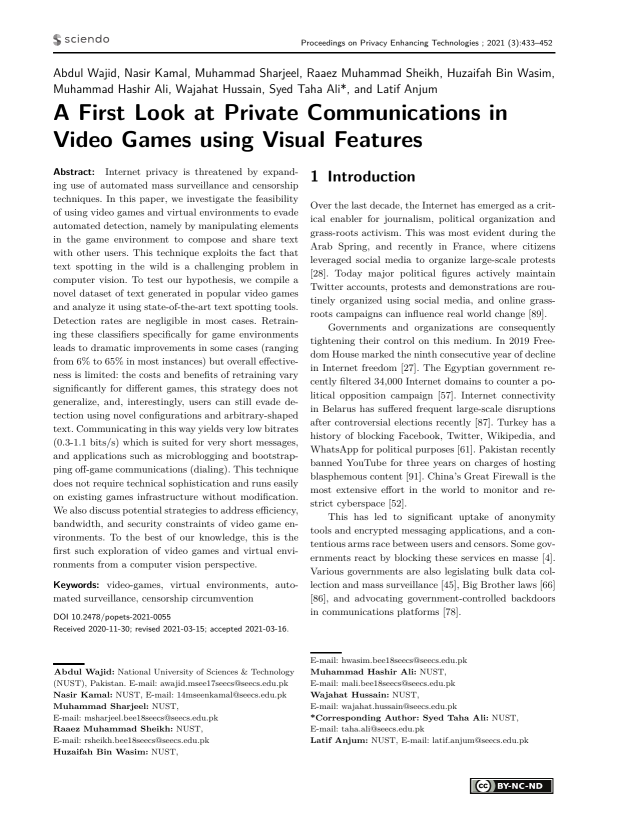A First Look at Private Communications in Video Games using Visual Features
Authors: Abdul Wajid (National University of Sciences & Technology (NUST), Pakistan.), Nasir Kamal (NUST), Muhammad Sharjeel (NUST), Raaez Muhammad Sheikh (NUST), Huzaifah Bin Wasim (NUST), Muhammad Hashir Ali (NUST), Wajahat Hussain (NUST), Syed Taha Ali (NUST), Latif Anjum (NUST)
Volume: 2021
Issue: 3
Pages: 433–452
DOI: https://doi.org/10.2478/popets-2021-0055
Abstract: Internet privacy is threatened by expanding use of automated mass surveillance and censorship techniques. In this paper, we investigate the feasibility of using video games and virtual environments to evade automated detection, namely by manipulating elements in the game environment to compose and share text with other users. This technique exploits the fact that text spotting in the wild is a challenging problem in computer vision. To test our hypothesis, we compile a novel dataset of text generated in popular video games and analyze it using state-of-the-art text spotting tools. Detection rates are negligible in most cases. Retraining these classifiers specifically for game environments leads to dramatic improvements in some cases (ranging from 6% to 65% in most instances) but overall effectiveness is limited: the costs and benefits of retraining vary significantly for different games, this strategy does not generalize, and, interestingly, users can still evade detection using novel configurations and arbitrary-shaped text. Communicating in this way yields very low bitrates (0.3-1.1 bits/s) which is suited for very short messages, and applications such as microblogging and bootstrapping off-game communications (dialing). This technique does not require technical sophistication and runs easily on existing games infrastructure without modification. We also discuss potential strategies to address efficiency, bandwidth, and security constraints of video game environments. To the best of our knowledge, this is the first such exploration of video games and virtual environments from a computer vision perspective.
Keywords: video-games, virtual environments, automated surveillance, censorship circumvention
Copyright in PoPETs articles are held by their authors. This article is published under a Creative Commons Attribution-NonCommercial-NoDerivs 3.0 license.

